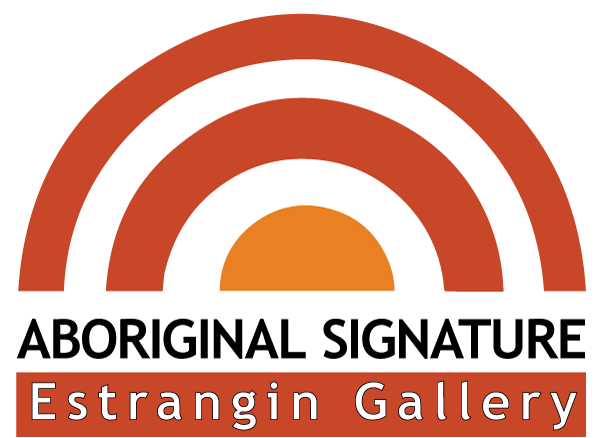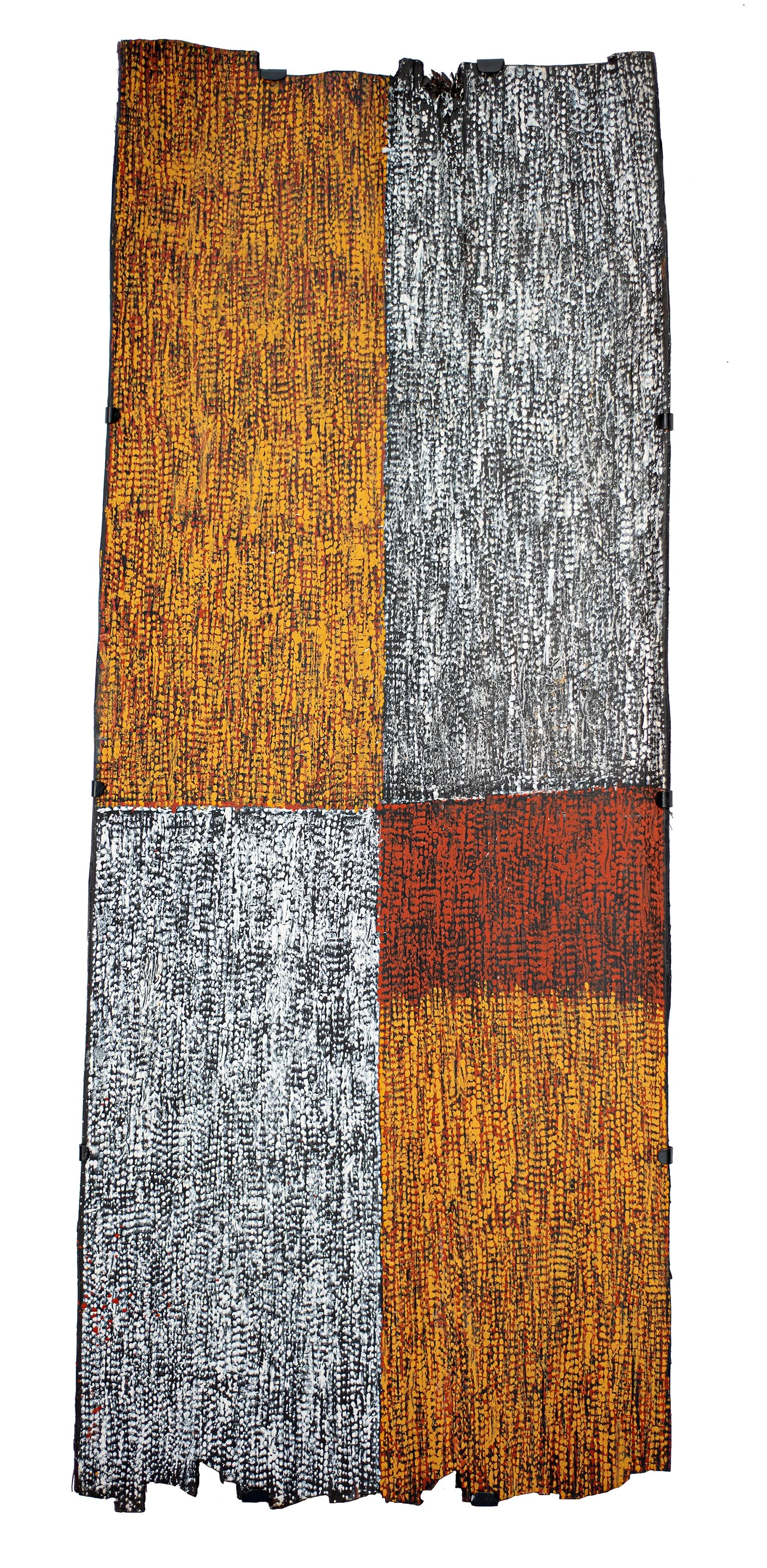Kaye Brown - Yirrinkiripwoja (body paint design) - 109 × 41 cm - 499-23 (sold)
Kaye Brown - Yirrinkiripwoja (body paint design) - 109 × 41 cm - 499-23 (sold)
Artiste : Kaye Brown
Titre de l'œuvre : Yirrinkiripwoja (body paint design)
Pigments naturels sur toile de lin Belge
Format : 109 × 41 cm
Provenance et certificat : centre d'art aborigène de Jalimara (Tiwi Island)
Référence de la peinture : 499-23
© Photo : Aboriginal signature with the courtesy of the artist & Jilamara Art centre (Tiwi Island)
Explications pour cette œuvre :
Kaye (1954) is a senior Tiwi culture woman. She is well versed in the old ways, parlinarri (old) stories and speaks the ‘hard’ Tiwi language. She started painting at Jilamara Arts and Crafts later in life after she retired from work. Prior to this she taught at the local primary school and worked at the Milikapiti Library. She loves teaching culture to the local primary school children who come to Jilamara for culture classes in the Muluwurri Museum.
She has a wealth of local knowledge about Tiwi culture and the history of her ancestors. She uses the Kayimwagakimi (carved ironwood comb) and locally sourced ochres from Melville Island to paint. Her yirrinkiripwoja/jilamara (ochre body paint design) are layered and reminiscent of the design that wulimawi (old people) used to prepare for ceremony and yoyi (dance).
She has been a finalist in the Telstra NATSIA Awards three times and was a significant part of the major TIWI Exhibition at NGV Australia in 2020/21.
Tiwi Culture places special significance on the Pukumani (funeral) ceremony. Mourners are decorated using natural ochres to disguise themselves from the spirit of the deceased and song and dance is performed to honour the dead. Yirrinkiripwoja (bodypaint) is the source of many contemporary Tiwi designs and performance of the pukumani as ritual helps to reinvigorate the imagery. The shortening of the word to Pwoja – also refers to the toothed ironwood comb used to apply the pwanga (dots) and is also used in Tiwi language to describe bones or even loose change.
You can find his artworks in the following prestigious collections :
National Gallery of Victoria
Art Gallery of South Australia
Wesfarmers Collection
Kluge-Ruhe Art Museum, USA

